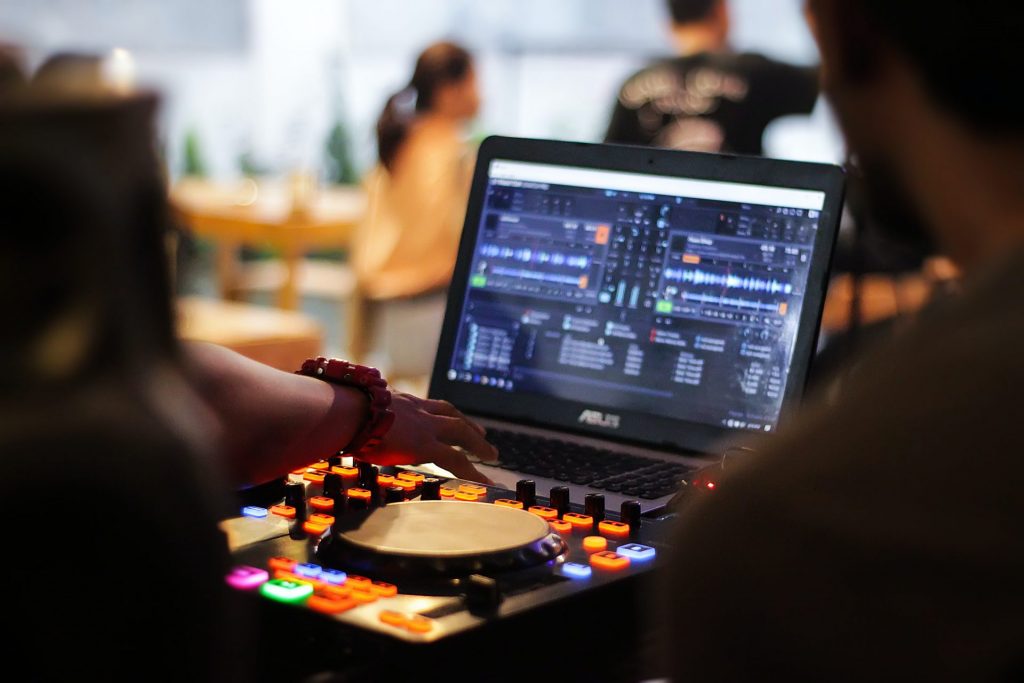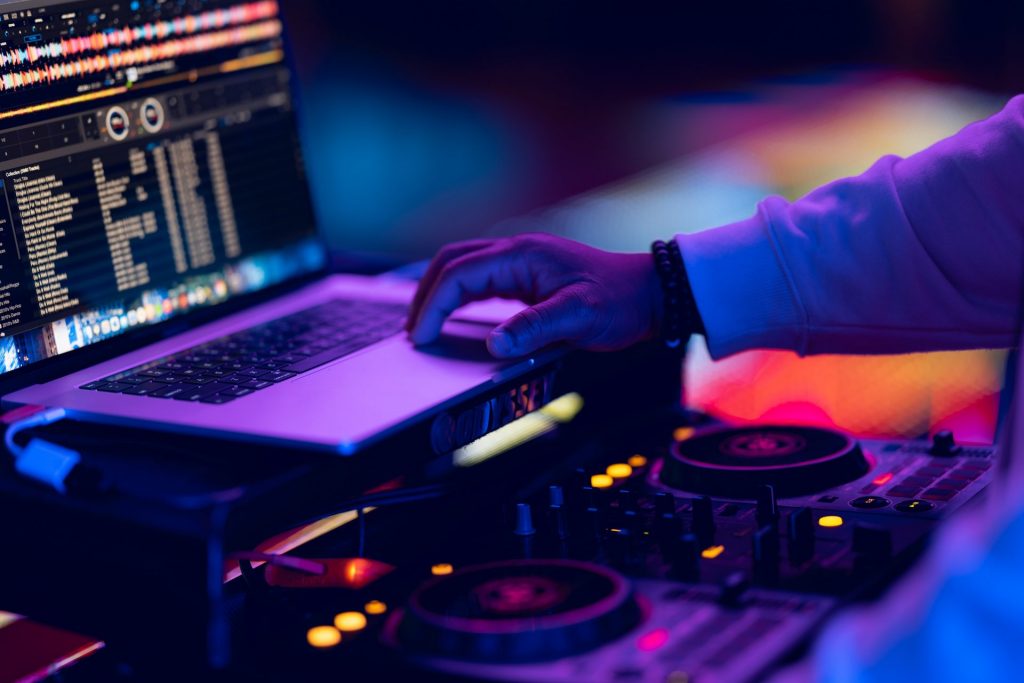
Cue points can be a DJ’s best friend for many reasons. Not only can they help you to better prepare for your sets, but they can also help you improve your mixing and music selection. In this article, we go over step-by-step how to set up your cue points and review the best ways to use them once in place.

How to Set Up Cue Points
Cue points are markers on your tracks at various points of the song. In most DJ software, they are color-coded and marked as arrows over the song’s waveform. They also are shown in rectangles along with the song title. Additionally, on many DJ consoles, they are marked as color-coded lights in the square buttons at the bottom of the device. Cues are stored as song meta-data, so once you create a cue in an audio file, it will show up on any computer.
To create a cue, simply click the plus button in a rectangle near the song title when your desired point comes up in the song. If there is not already a cue linked, you can also press the button on your console when the desired cue point comes up; a cue point will automatically be created. Once you create a cue point, you can retitle it and drag it around to change the order of listed cues. Sometimes record pools like BPM Supreme add cues to their songs, and you can also use a software program called Mixed in Key to automatically create cues at what the algorithm considers key moments of the song.
When you click on a cue in your DJ software or press the button associated with that cue, the audio player will jump to that point in the song. By color-coding the song’s dial, your DJ software also gives you a heads up when a song is about to reach a cue.

Best Ways to Use DJ Cue Points
There are many practical and creative uses for cue points. Here are some of them:
You can mark intros, verses, choruses, and other key parts of a song’s structure.
One good practice, especially when you are first learning to DJ, is to mark off the start of every intro, verse, chorus, bridge, and outro in a song. You can retitle the cue to something like “Chorus 1”. You can also count the number of bars in each section and add that as a note in your cue point description. When you are mixing, you can use these cues to layer sections of two songs with the same number of bars so that your transition from one song to the next is natural.
For example, you can mark the chorus start and number of bars of one pop song, then download an intro version of another pop song from BPM Supreme. If each part is 8 bars long, you can drop the intro of the second song at the beginning of the chorus of the first song. Then, when the chorus to the first song is finished and 8 bars have elapsed, the verse of the second song will begin right away. The flow of the beats will be so natural that the transition will just sound like one song.
You can mark when vocals begin.
A good DJ practice is to avoid letting the vocals of two songs play at the same time. When you see the vocal of the second song coming, you can transition out of the first song before the second song’s vocals come in.
You can sample interesting parts of a song.
By tagging a cool section in a song such as a vocal, synth riff, or guitar solo, you can then hit the cue button to play it as many times as you want over the other song. You can also keep triggering this section as an intro before finally letting the song play out. Additionally, you can loop a section while playing another song or acapella over it.

You can skip parts of a song.
By marking off key sections in a song, you can skip a long instrumental section, draggy verse, or repetitive section. To do this, you can hit the preferred cue point right after the end of an earlier section, such as the first chorus.
You can mark off key starting points of a song.
You don’t always want to introduce a song at 0:00 on the track. Sometimes songs have long spoken word parts or slow instrumental intros. Sometimes it takes a bit of time for a beat to kick in, and sometimes it might take a while to reach vocals or a substantive instrumental section. For this reason, you can mark off the moment when the singing begins, or when a beat kicks in. When you want to mix out of the previous song, you can hit the cue button to bring the song to your marked starting point. You can then mix in the song from there and cut out the less impactful parts of the song.
You can mark off key ending points of a song.
The moment when the last chorus or instrumental part ends is not always the moment when the audio stops. Rather than waiting to hear this moment, you can anticipate it with a cue point. When that cue point nears, you can have your next song on deck to immediately begin. This way, there won’t be a stretch of silence before the new song.
You can tag the most memorable parts of a song.
There might be a section of the song that everyone knows. You can drop in this part creatively to maximize impact and build energy.
You can tag good echo and echo out points.
Echo points are a key way to transition from song to song, especially if the BPMs vary significantly. By setting a cue on a sound or beat that echoes smoothly, you can echo out when that moment hits. This will create a natural transition to the next song.
You can mark off explicit parts of a song.
If you know you can only play clean versions during a gig, you can have a heads up when an explicit part comes and mask the word or transition to a different song or part of the song.

Cue points, while sometimes time-consuming to create, make DJing in real time easier and more natural. You are less likely to slip up when you know what to expect, and you can cleanly structure your transitions. You can also use cue points creatively to sample and produce music in real time during your DJ set. Like most other DJ tools, cue points can be used in many different ways. As you experiment with cue points, you may eventually come up with a process that works best for your individual DJ needs!

